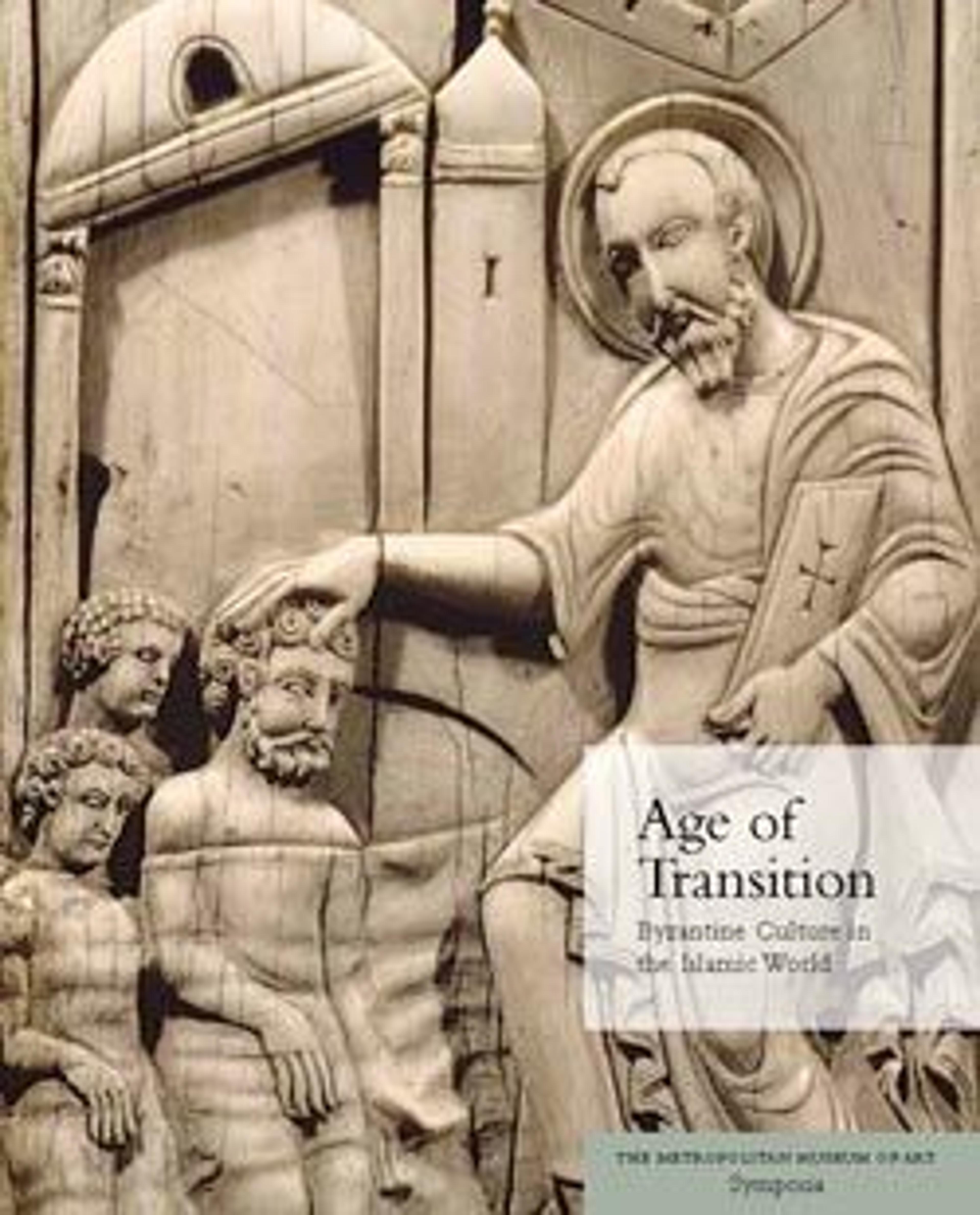Plate with David Anointed by Samuel
In 628–29 the Byzantine emperor Herakleios (r. 610–41) successfully ended a long, costly war with Persia and regained Jerusalem, Egypt, and other Byzantine territory. Silver stamps dating to 613–29/30 on the reverse of these masterpieces place their manufacture in Herakleios’s reign. The biblical figures on the plates wear the costume of the early Byzantine court, suggesting to the viewer that, like Saul and David, the Byzantine emperor was a ruler chosen by God. Elaborate dishes used for display at banquets were common in the late Roman and early Byzantine world; generally decorated with classical themes, these objects conveyed wealth, social status, and learning. This set of silver plates may be the earliest surviving example of the use of biblical scenes for such displays. Their intended arrangement may have closely followed the biblical order of the events, and their display may have conformed to the shape of a Christogram, or monogram for the name of Christ.
The prophet Samuel, recognizing David as God’s chosen one, anoints him (1 Samuel 16:13). David’s father, Jesse, and two of his brothers watch. The calf, knife, and altar below Samuel refer to the sacrifice he was supposed to offer in Bethlehem (1 Samuel 16:1–3); the ram and staff below David signify his role as keeper of his family’s flock (1 Samuel 16:11).
The prophet Samuel, recognizing David as God’s chosen one, anoints him (1 Samuel 16:13). David’s father, Jesse, and two of his brothers watch. The calf, knife, and altar below Samuel refer to the sacrifice he was supposed to offer in Bethlehem (1 Samuel 16:1–3); the ram and staff below David signify his role as keeper of his family’s flock (1 Samuel 16:11).
Artwork Details
- Title: Plate with David Anointed by Samuel
- Date: 629–630
- Geography: Made in Constantinople
- Culture: Byzantine
- Medium: Silver
- Dimensions: Overall: 10 1/2 x 1 1/2 in., 47.1oz. (26.6 x 3.8 cm, 1334g)
foot: 4 13/16 x 1/2 in. (12.2 x 1.3 cm) - Classification: Metalwork-Silver
- Credit Line: Gift of J. Pierpont Morgan, 1917
- Object Number: 17.190.398
- Curatorial Department: Medieval Art and The Cloisters
Audio
9724. Silver Plate with David Anointed by Samuel
0:00
0:00
We're sorry, the transcript for this audio track is not available at this time. Please email info@metmuseum.org to request a transcript for this track.
More Artwork
Research Resources
The Met provides unparalleled resources for research and welcomes an international community of students and scholars. The Met's Open Access API is where creators and researchers can connect to the The Met collection. Open Access data and public domain images are available for unrestricted commercial and noncommercial use without permission or fee.
To request images under copyright and other restrictions, please use this Image Request form.
Feedback
We continue to research and examine historical and cultural context for objects in The Met collection. If you have comments or questions about this object record, please contact us using the form below. The Museum looks forward to receiving your comments.
